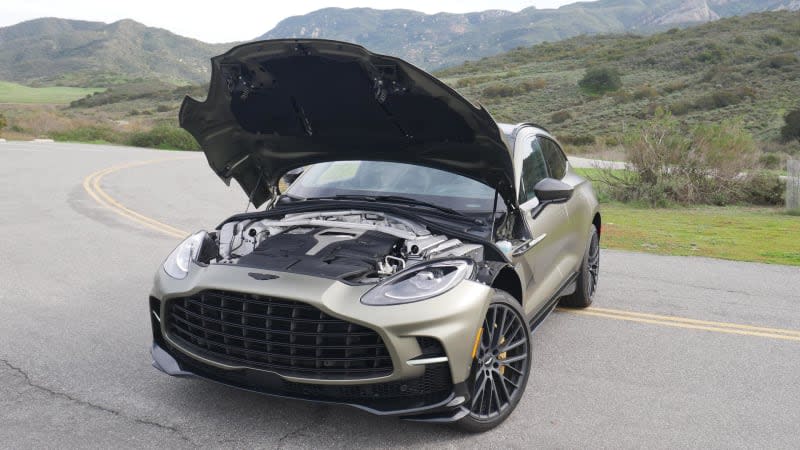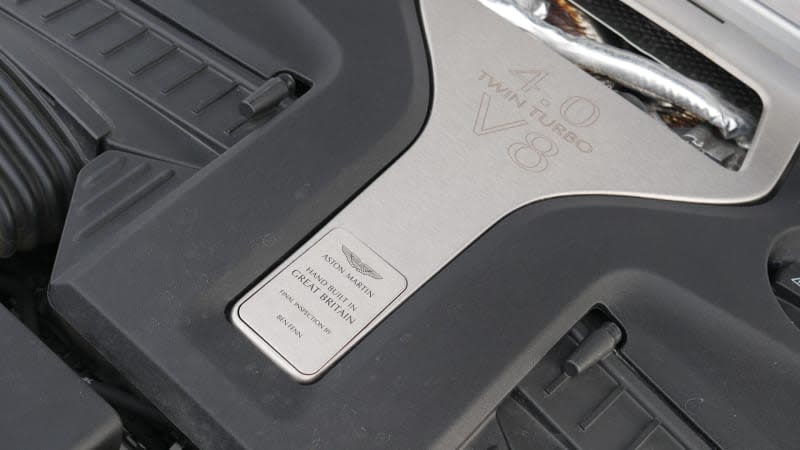2023 Aston Martin DBX707 Road Test: 2 exceptional cars for the price of 3

NEWBURY PARK, Calif. – Just about a year ago, the headline for our Aston Martin DBX review read as “Two exceptional cars for the price of two.” And not two affordable cars, either. No, no, that one cost $222,000. Ka ching. Yet, as I argued at the time, you were at least getting the equivalent of a $110,000 luxury SUV and a $110,000 sports car in one package. In the context of garage space, how very economical.
Well, today we’re considering a 2023 Aston Martin DBX707. It cost $292,186, which is pretty much the cost of three not-at-all-affordable cars. I’m going to tell you right now that it hasn’t picked up a convertible roof or a pickup bed or some other magic trick to be three cars in one. It’s still just an exceptional luxury SUV and exceptional sports car in one. So, what exactly do you get for the cost of an extra exceptional car?
The name 707 refers the amount of power its engine produces in pferdestärke, or metric horsepower, which should be the first sign that its engine is as British as Queen Victoria. You see, Great Britain and its former American colonial holdings don’t believe in any of that metric stuff and instead use mechanical horsepower, which would be 697. I guess DBX697 sounds like a license plate rather than the vaguely Bondian DBX707? Either way, that would be 155 horses more than the DBX. It produces 147 more pound-feet of torque, too, for a total of 663 lb-ft. Please don’t ask what that is in newton-metres.


To get all that extra power, Aston Martin extensively worked over the DBX’s already worked-over version of a 4.0-liter twin-turbo V8 sourced from Mercedes-AMG. Indeed, you won’t find a car with the 707’s specs wearing a three-pointed star. Among the changes Aston originally made was to the cylinder firing order, which results in an odd, slightly gravelly tone that must totally cheese off the ladies and gentlemen in Affalterbach. The 707 then gets new turbochargers, different induction and exhaust systems, and a new engine control unit. The drive shaft is also carbon fiber, the final drive ratio is 7% shorter and the shift paddles are not only bigger, but made of carbon fiber rather than metal. So, like good Queen Vicky, the 707 engine was raised in England but the DNA is pure German.
To handle all that extra power and to aid in slashing the 0-60 time down to 3.1 seconds from 4.3, Aston engineers replaced the standard DBX’s traditional automatic with a different AMG nine-speed unit that features a wet clutch pack in lieu of a torque converter. I didn’t know that particular piece of information during my week with the DBX707, so I can at least say that in mundane driving, it shifts smoothly enough to not draw attention to its more performance-oriented lineage.
More aggressive driving? Well, unfortunately, the DBX707 came to me amidst one of Southern California’s multiple atmospheric rivers. That’s great for making the surrounding mountains look like I was fittingly testing the Aston in Scotland, but not so good for road conditions. Coming around a blind corner at 45 mph to discover a Mini Cooper-sized boulder in the road has a way of ruining your day. And then there was the standing water. And the mud. And the cars veering into your lane to avoid the standing water and mud. So yeah, vigorous lap of the Santa Monica Mountains was not in the cards.
Now, had I come upon a Flintstonian obstacle, the 707 comes standard with carbon ceramic brakes featuring six-piston calipers with 16.5-inch rotors up front and 15.4-inch rotors in the back. They fill standard 22-inch wheels, which in the test car meant gold calipers behind matte black spindles. They paired perfectly with the matte paint, which is officially known as “Q Satin Titanium Grey” but is totally green.


 Yahoo Autos
Yahoo Autos 
